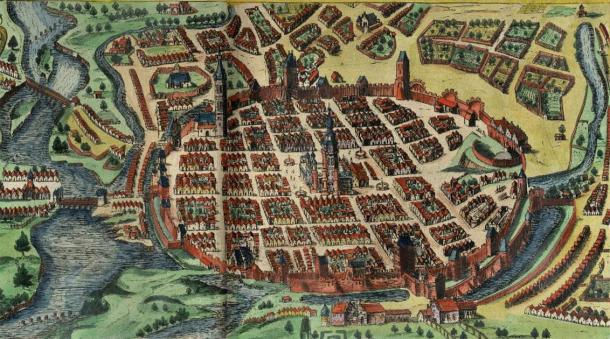Massive Polish Fort Walls Over 100 Feet Wide Indicate Medieval Capital
The finding of three rings of fortified walls gave archeologists startling new information about Poland’s Middle Ages.

The finding of the enormous Polish fortress walls suggests that Poznan be the very first Polish capital and the people had taken full steps to protect this tactical center.
The Enormous Polish Fort Walls Can’t Stop Development
The walls determined 40 meters (13123 ft.) large and 12 meters (3937 ft.) high, which, according to The First News, indicates that these stronghold walls are “the biggest of their kind in Poland.”
They were constructed of a mix of sand, stone, and wood and would have been an enforcing view when they happily stood surrounding and safeguarding the city from its opponents over a thousand years earlier.
The archaeologists utilized photogrammetry and dendrochronology strategies to date the huge Polish prepared city walls and identified that they were constructed in between 968 and 1000.
Archaeologists found the Polish fortress’s ruins 7 meters (2297 ft.) underground while they were checking out the website which is set to be an apartment building.
The structure designer’s site states that the historical work is total and the building of the homes continues “on schedule.”

The Indication of an Early-Medieval Capital City
Archaeology reports that the brand-new info indicates that Poznań takes over from neighboring Gniezno as the area of the nation’s very first capital city. As the chief archaeologist at the website, Antoni Smoliński, stated:
” Previously, our companied believe that Poznań was a settlement of secondary significance. Nevertheless, offered the discovery of the huge defences, this declaration is extremely doubtful.
The Early-Medieval city was, certainly, a tactical centre and the post-christening capital of Mieszko I’s Poland.”

Poznań and St. Peter’s Sword
A previous Ancient Origins post likewise names Poznań as the house of St. Peter’s sword, mentioning that:
“During the reign of Mieszko I (ca. 960 – 992 AD), Christianity was adopted as the religion of the state. To commemorate the conversion of Poland, Pope John XIII decided to give the Sword of St. Peter as a gift, either to Mieszko I, or to Bishop Jordan, the first Bishop of Poland.
Mieszko’s center of power was in Poznan, whilst the bishop is believed to have had his seat in the same city, hence the Sword of St. Peter ended up there, regardless of whether it was the duke or the bishop who received the papal gift.”

Bible stories state St. Peter utilized the sword to trim the best ear of among the high priest’s servants on the night prior to Jesus’s crucifixion. It now sits with gold and silver spiritual antiques in the city’s Archdiocesan Museum.
